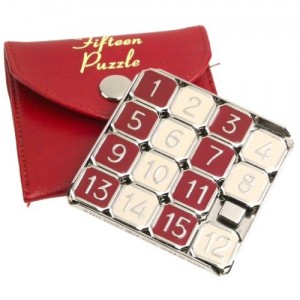(In which I probably guarantee that I won’t be published by Simon and Schuster.)
Preface
I waited a day to talk about this, because I was pretty mad and ranty about it yesterday. Having given it a full twenty-four hours and evaluating my internal gauges, it turns out that I’m still angry, and that is not likely to fade, so there’s no point in postponing the discussion further.
Because I’m mad, this post may meander a bit. I will edit it as much as I can to make it coherent, but no promises. Don’t hate me for THAT, at least.
Points of Reference and Context you will Need
Yesterday, Simon and Schuster (a fairly major book publishing company) announced that they will be delaying, by four months, the electronic-book editions of about 35 leading titles coming out early next year.
(Hachette, another publisher, also announced plans along these lines, but I’m focusing on Simon and Schuster’s statement because Hachette only announced their intent to do so, not the concrete plan — in other words, they might still back out, and ‘we might do this too’ isn’t news to me.)
(Update: HarperCollins is on the same bandwagon.)
Giving credit: this story was linked off twitter by James McQuivey, who wrote about it at length on the Forrester Blog. It’s a good read, and (necessarily) polite enough that no one’s likely to lose a client over it. If you want a polite assessment, I recommend his.
(Egregious oversight: my amazing wife wrote about this yesterday on her agentry blog, and got a good conversation going there as well.)
Anyway. @glecharles (Guy L. Gonzalez) linked it on twitter, which brought my attention to it, and Rob Donoghue (whom I’m not going to link to on Twitter because his page is privacy-locked, but whom I respect immensely) summed up my immediate reaction with this comment:
Simon & Schuster and Hachette – doing their part to guarantee ebook piracy becomes the norm.
If you don’t see the point Rob’s making, give me a minute – I promise I’ll get to it.
This whole thing is essentially a straight-up counterattack aimed at online retailers like Amazon who are selling the ebook copies of best sellers for “only” $9.99.1
See, those $9.99 sales are actually costing Amazon about five bucks per sale. Get that? Amazon is losing money on every bestseller Kindle ebook they “sell”2 right now. Why are they doing this? Simply, to set consumer expectation for a lower price point on ebooks and to use that as leverage to force publishers to sell ebooks for a price somewhere in the same hemisphere as ‘sane’.3
Now, I’ll give S&S props for honesty; they are very up front about the reason for this decision: money. From the WSJ article:
…taking a dramatic stand against the cut-rate $9.99 pricing of e-book best sellers.
“I can’t sit back and watch years of building authors sold off at bargain-basement prices.”
Simon & Schuster has high expectations for the 35 titles involved, all of which either have large printings or are expensive.
[P]ublishers have come to fear that the bargain prices will lead consumers to conclude that books are worth only $10, or less, upsetting the pricing model that has survived for decades.
Ms. Reidy said she is concerned that e-book sales are cannibalizing new best-selling hardcovers.
“What horrors,” cry publishers. “Ebooks only cost us a tiny, tiny fraction of the money required to print, ship, store, and physically stock hardback copies of our books, so those evil, evil people-who-are-not-us actually want us to charge proportionately less money for them! Woe. Woe!”
What greed. What myopic planning. What longing for an unrecoverable, pre-digital past. What mewling.
And worst: what foolishness, to force your customers to steal from you.
Let me explain how easy it is to create a digital copy of a book. Almost anyone I know can do it in less than an hour with tools readily available.
- Acquire a hard copy of the book in question. Paperback or hardback. Doesn’t matter.
- Cut the spine off. Fan the pages.
- Drop those pages into the autofeeder on any decent digital copier. It’s nice if it’s one of those higher capacity ones like those that sit at your day job, but even the $200 printer/fax/copier/scanner jobbies that you can get at Office Max will do just fine.
- Click “Double sided original” and “Scan to file”.
- Wait. (Or, if you have the cheaper unit, repeat the process for a chunk of pages a time.)
I now have a digital copy of the book, saved to my computer. With a few more button presses, I can format it for pretty much any ereader on the planet, but it’s probably already a PDF, and thus accessible by nearly anyone. If I want to get fancy (and that’s a big if) I can run Optical Character Recognition on each page of the scanned document to make it a truly scannable, searchable document, but I don’t need to – I already have a readable copy of the book.
…which I can flag with a few tags and share via any one of a thousand various methods largely impossible to trace back to me.
That whole process took me less than an hour. I am, at best, merely competent with a number of introductory-level tools available to me for such a task. I don’t do this. Moreover, I don’t do it to make money, so I haven’t streamlined the process. For someone with experience, this process takes less time to do than it took me to describe it and format the bullet list.
(This, incidently, is one of the weakest reasons why DRM (Digital Rights Management) on ebooks is futile, rank stupidity, and an utter waste of time and money.)
So let’s say I’ve done all this.4 Let’s forget about best-sellers for a second and say I’ve done this with one of the several hard copies I own of one of my favorite books that’s currently unavailable electronically: The Well-Favored Man, by Elizabeth Willey.5
Let’s say that you read about this book and you’d like to get a copy. Hard copies are in vanishingly short supply and ebook versions aren’t available via normal channels. Just for the hell of it, you do a Google search for “Willey torrent well-favored”6 and lo and behold, you see that such a thing exists.
Do you download it?
The file might carry viruses. It might be incomplete. It might be a copy of the Spanish edition. It might be barely legible. It might, in fact, be all of those things, but there is one thing it most definitely is.
It is the only option available. Of course you download it.
Now, you’re probably like me: you’d like to give some money to the author. Maybe you’d even like to give some money to the publisher — I can’t think of good reason not to, really — but the option isn’t there, so you don’t. I mean, it’s not your goddamn fault, is it? If they wanted money, they’d have made the thing available via legitimate channels, and you’d have bought it there.
Because, seriously, it’s not about the money, is it? You’re not breaking the law to get this book because of the price tag. Given the choice between a potentially virii-laden, potentially ugly, potentially incomplete, potentially foreign-language edition copy from a torrent site and one from Amazon, I know that I would pony up and buy from Amazon. Or the publisher’s website. Or the author’s website. Or whatever. It’s safer, it’s better, and it’s just generally nicer.
But I don’t have that choice in this situation.7
Now, let’s take a look at a Shiny New Best Seller.
As we did previously, let’s create an example that flies very far from reality, so that I can’t be accused of actually doing this stuff. Unfortunately, Simon and Schuster actually publish writers I enjoy, like Stephen King. I need an example that I would never in a million fucking years ever want to read. Maybe Hachette…
Oh look: Hachette publishes Stephanie Meyer. Bingo.
So let’s say that Stephanie Meyer is publishing a new book. Perhaps something aimed at the adult readers market — some kind of modern-day horror story about how almost everyone in the world has been taken over and brain-washed by aliens and only the main character and the rest of the holy chosen who coincidentally reside in Utah and a few others have been able to resist this soul-destroying effect.8
Let’s say, for the sake of argument, that I really want to read this book. A lot. I’m salivating at the very thought of it.
Let’s also say that, for whatever reason, the hardback copy is a non-starter for me. Doesn’t matter why, but the point is: I want an electronic copy.
The book comes out in hardback. There is no electronic copy available.
What am I going to do?
Of course I am. You know I am.
Why? Because there is no legitimate copy available.
Why? Because the publisher made sure that was the case. They purposely created a situation that, in the case of The Well-Favored Man, exists only because of true scarcity and a book that never existed electronically in the first place. This other scarcity, the one I’m experiencing now, from this (no doubt) best seller, is artificial; created by the simple fact that someone at Hachette chose not to click on the ten or so buttons that need to be clicked to publish a book electronically.
Now, some folks are comparing this to the staged release of hard copies of books. “First there are hard copies,” they say. “Then there are trade paperbacks, then Mass Market paperbacks. That’s the Natural Order of Things — we’re just inserting Ebooks into the Natural Order.” Those people are not thinking; they are not taking into account that what we are talking about here is digital.
Because, you see, digital is not the same thing. It is a new animal, one of which the publishing industry is, by and large, abjectly terrified. If I want a paperback copy of a hardback that just came out, I am just plain out of luck; such a thing does not exist, and it shall not exist until the publisher makes it so.
The ebook already exists.
An hour after this hypothetical Meyers book hits the stands, someone has scanned it and put it online. It will exist on 24 thousand peer-to-peer machines in half as many hours. Or maybe someone at the publisher ‘leaked’ the electronic proofs for a little private Holiday Bonus. Or any one of a dozen other things happened.
DRM is a joke that people in the industry just don’t seem to get. There is only one way to deal with ebook piracy, and that’s by providing a safe, clean, legitimate, keeping-my-karma-shiny electronic version of the book — a clearly superior competition. That strategy actually makes piracy non-viable as a practice, let alone a consumer choice.
The publishers (and the authors) are worried about the downward trend in ebook pricing. “We won’t get paid as much,” they say. “Shouldn’t we be worried about that?”
Consider this: you can get paid marginally less, or you can get paid nothing at all.
Simon & Schuster publish Stephen King, who recently released Under the Dome. S&S released the ebook and hardback on the same day. King will no doubt release another book in 2010, and for that future release S&S will delay the ebook availability by four months.
You want to see a fun chart?
In eighteen months, look back and chart the ebook sales from the first four months of Under the Dome (following the first date-of-release for the hardback), and compare those numbers to the ebook sales from King’s next book for the first four months following the first date-of-release for that hardback. I’ll help you out: the four monthly totals for the new book will be zero.
Then: listen to the wailing from S&S (and maybe King, though I hope to god he’s smarter than that) about how ebook piracy is cutting into their sales.
This decision, which I fully believe is grounded in nothing less than a toddler-like desire to cling to the once-profitable but entirely outdated publishing structures of the past, actually creates an environment where, from a ebook-pirate’s perspective, it is a good idea to steal from them, because there is no legitimate competition in that space.
Since this mistake so closely echoes mistakes made in the music industry about 15 years ago, I have no doubt that their next epic cock-up will be to roll their ‘losses’ down to the artists on whose work they float in a sea of black ink.
The publishers are afraid of the way the world is changing. The authors are ignorant of the larger sea-changes coming in (most of them, and god love ’em for being so fixated on the writing that they are). The publishers act out of that fear, creating a situation where getting a pirated copy of the book is the only option.
And the authors end up paying for that mistake.
That’s why I’m angry.
Stuff that didn’t fit anywhere, even in the footnotes
I hope to christ that anything I create is pirated across every fucking p2p network in the world. As a relatively unknown author, obscurity is far more deadly than piracy. In the end, I will profit from more people reading one of my stories, even if I didn’t get paid for it that first time. I’m not some hippie content-wants-to-be-free guy, but I do very firmly believe in removing any and all obstacles between someone who wants to read my stuff and… my stuff.
Some folks asked me yesterday what I thought of James McQuivey’s idea to delay the ebook four months, but also give it away as a free thing with every purchase of a hardback edition. I think it’s a great idea. I thought it was a great idea when I suggested it to my agent about six months ago on Twitter. However, I won’t take credit for it – the indie gaming industry has been doing that for years; as a smaller, more nimble publishing organism, it has already felt and adapted to the changes of the digital age, and could teach the ‘real’ publishing world a thing or two about what works and what doesn’t.9
Authors: your story – the story itself – is not worth 25 bucks per copy, simply because the hardback gets priced at that amount. It’s not even worth the $7.99 for which the mass market paperback sells. Both of those amounts encompass a lot of publishing costs that having nothing to do with you or the story. The value of the story (to the publisher) is exactly however many pennies on the dollar you get paid, per copy. If you want to fight for something, fight to make sure that value does not decrease (or better yet, increases), regardless of whatever happens to the price of the books or ebooks. You have that kind of leverage, because your story is the heart of the thing in the end.
The true value of the story is in how well it connects you with your readers, both now and for years to come.
1 – I still think that’s fucking highway robbery, but that’s a rant for another day.
2 – For “sell”, read: “Rent”. Again, a rant for another day.
3 – Only the same hemisphere, though. Not within contemptuous spitting distance or anything; let’s not go crazy.
4 – I haven’t.
5 – Again, I haven’t, although if you are reading this, Ms. Willey, I would very much like to work with you to make your work available to readers again, legally. Please contact me.
6 – Or you engage in any one of a dozen other searches that yield such results. Whatever. I’m not that experienced at this stuff, which should tell you something about what the experienced people can accomplish.
7 – Maybe I’ll go buy a copy of Well-favored Man from a amazon-vetted bookseller to assuage my guilt, but that’s a pretty fucking empty gesture — it’s a reseller: the author’s not getting any of that money anyway.
8 – Not that she is.
9 – Again, a post for another day.







